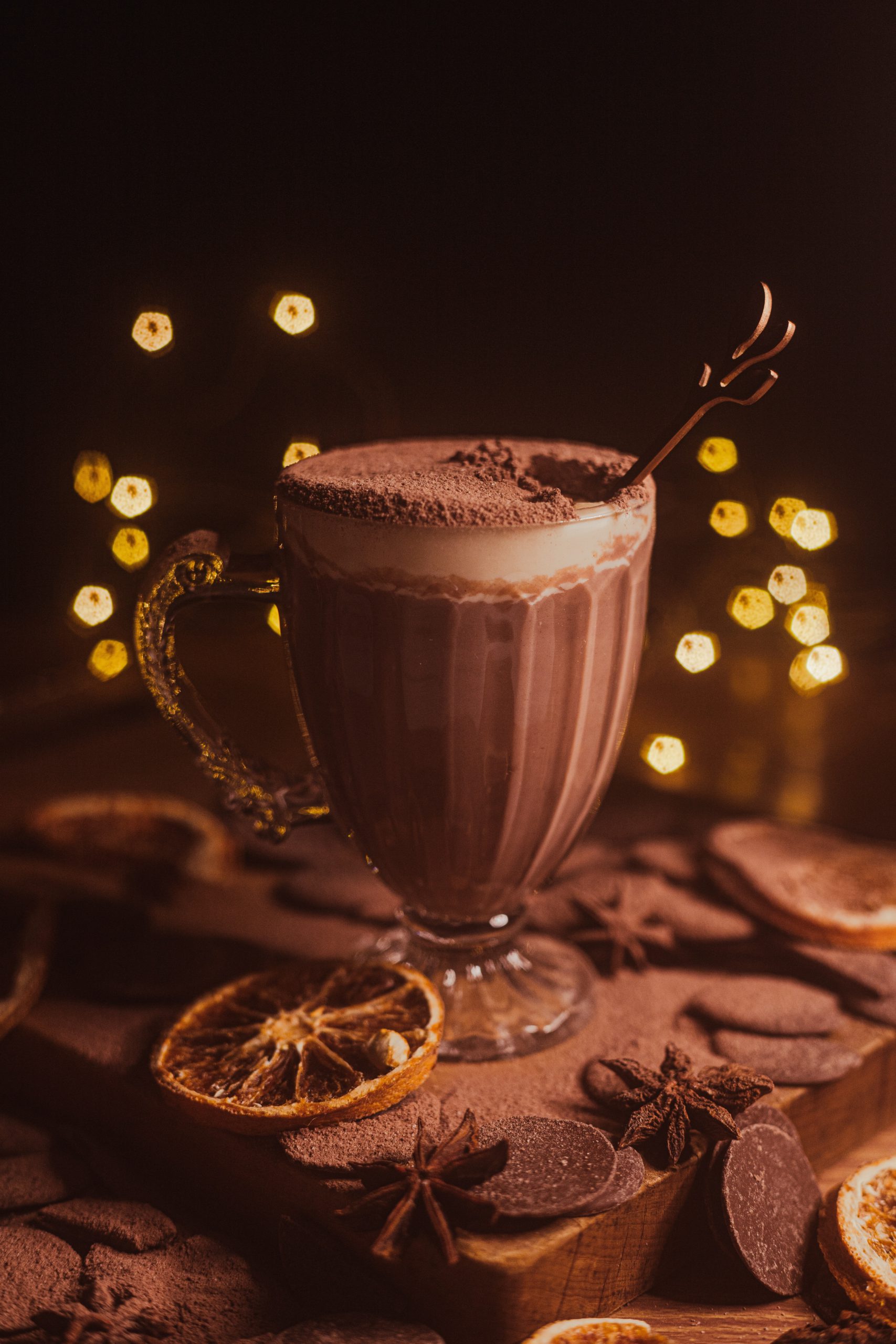Traditionally, ceremonial cacao is served without any sweeteners (it is an acquired taste–meet your body where it is). It is not required for ceremonial cacao to be raw, although some prefer it this way. I have worked with different varieties of cacao and can tell whether it is appropriate for a ceremony just by drinking a cup. I do this because I love how adding can improve the ritual chocolate, and it is fun to be creative with flavours.
If like me, you enjoy your ceremonial cacao a little sweeter, you are better off using unsweetened nut milk and a sweetener of your choice. An optional addition is unsweetened coconut milk, which gives the drink that rich, creamy taste that I like. If you would like a nut-free, creamy drink, try using coconut milk instead. For the vegan version, use canned coconut milk in place of the milk (I’m not too fond of the taste of the nut milk in this recipe, but it is subjective) and substitute the honey for maple syrup.
If you are looking to make vegan hot cocoa, I would suggest using unsweetened oat milk or almond milk. I recommend using raw cacao powder to get the richest chocolatey flavour in your hot cocoa. You can make brownies, cookies, cakes, and pretty much everything that you would bake using normal cocoa powder using raw cacao powder.
Both made with cacao, cocoa powder is like super-low-fat granola, so you cannot substitute either for the other all the time. To create a cocoa powder, which is used as a base for most hot chocolates, companies extract the mass and squeeze out a lot of fat, which is used for cosmetics and other industries. To make chocolate, cacao beans are harvested, fermented, dried, and then roasted, peeled, and ground to produce the smooth mass of cacao. To make a traditional Table, you grind cacao beans slightly smaller, then shape the mass into balls for storage (instead of adding sugar and further refining).
Cacao paste is cacao oil and powder combined, and since the bean’s fat content remains unadulterated, it helps to balance its stimulant properties and promotes absorption in the body for longer periods. Our Cacao Paste is better suited than Cacao Powder for a keto diet as cacao paste, nibs, and beans still contain all their natural fats. You can think of cacao paste and powder similarly to a smoothie and juice.

These days, I tend to create my Cacao drinks more in the form of pastes, rather than in the form of powders, or 100% in the form of pastes. Cacao powder is like shooting the juice, with no pulp, which would slow the digestibility of the substance, providing a fast and potent hit of the plant’s nutrients. Cacao powder is indeed cold-pressed but usually heated at a very high temperature at an early stage in the production process (see the chart below). Since I drink cacao regularly, I grind every chunk as soon as I am ready to use it for the first time.
First, whisk the raw cacao powder in cold milk with a sprinkle of honey, a dash of vanilla, and a dash of salt (which balances out the flavours) until smooth. Pinching Salt Instructions In a small pot, whisk together the milk, cacao powder, honey to taste (a teaspoon or two should be fine), vanilla and a pinch of salt (sometimes I will add a sprinkle of cinnamon too, or even cayenne if I am feeling saucy).
Measure out cacao, spices, and sweetness into the small pot, and set on low. Combine all ingredients into a low-heat pan, allowing the cacao to dissolve as you continually stir (do not allow it to boil). It is best to add a bit at a time and keep stirring until it is all blended and smooth. At this point, you can place the pan over the burner at low heat and begin to warm up the cacao a bit.
When the mix is smooth, mix in the remaining milk and warm up the cacao until it is hot enough to drink (do not allow it to boil). Add very little warm water to the powdered cocoa mix, stirring together with a spatula. Whisking the cacao in with the milk before heating allows it to fully dissolve (if you add in with the hot milk, it may lump).
When preparing cacao, butter from the cacao will be rendered and re-distributed, creating a nice cup of ceremonial cacao (or drinkable chocolate). If you are looking for a warm, chocolaty treat that is also nutrient-dense, try this healthy cacao powder hot chocolate. This easy, homemade hot chocolate with cacao powder is made with milk, honey, cacao powder, and a little bit of vanilla. You can sweeten this raw cacao hot chocolate with white sugar, or you can use maple syrup or agave nectar.
While I like this drink because of its deliciously refreshing flavour, the raw cacao seeds are packed with flavonoids. I wanted to share some of the healthy qualities of the spices found in this warm flavoured cacao. This hot spiced cacao recipe balances the bitter flavours and stimulating qualities of the cacao with cardamom, cinnamon, ginger, nutmeg, and natural sugars.
I keep this organic raw cacao powder on hand for baked goods, sugar rubs, smoothies, and homemade chocolate sauces and syrups. You can also use baked cacao or cocoa powder (it goes by several names), be sure to pick the unsweetened variety (and remember that they will not taste quite as chocolaty as cacao).

